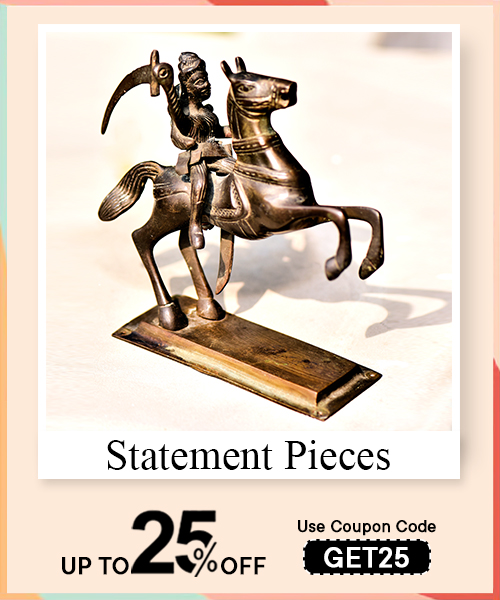Collage painting is not merely an art form, it is a tactile dialogue between fragmented memory and deliberate composition. It holds within it the pulse of deconstruction and reconstruction, of layering texture over tone, essence over embellishment. Born from the instinct to assemble the disjointed into something poetic, collage painting brings together paper scraps, cloth, newspaper prints, dried flowers, and brushstrokes, each carrying its own time-stamped story. Whether minimalistic or complex, this genre of visual arts thrives on juxtaposition. It bridges chaos and control, guided by a subconscious rhythm that elevates scraps into fine art. In its layered silences and orchestrated noise, it speaks not just through what is added but also what is left out. As a genre, it echoes a tactile intimacy that aligns closely with the experimental spirit of Picasso and Braque where cutting becomes creating.
Collage painting is defined by its structural juxtaposition, the artistic process of assembling cutouts, fragments, and painted elements into a unified whole. It’s the craftsmanship of contradiction, the layering of materials like paper, fabric, or ephemera onto a painted surface, creating a textured narrative. Unlike pure painting, it thrives on tactile tension, where depth emerges not from shadow but from physical layering. The visual vocabulary of collage painting merges image with material memory, each scrap, wrinkle, and paste becomes a punctuation mark in the painter’s sentence. This form allows the artist to collapse timelines, blend cultural residues, and initiate dialogue between found objects and painted gestures. Whether raw or refined, abstract or thematic, the medium is defined by disruption, cutting into surfaces and stitching together disparate elements with visual harmony. It turns the discarded into the curated, emphasizing that every edge, tear, or overlay is intentional and speaks a language of its own.
While often used interchangeably, collage painting and mixed media differ in their conceptual spine and execution. Collage painting is defined by the intentional layering of physical fragments, paper, photographs, fabrics, adhered onto a canvas or base, often intertwined with brushwork. Its language lies in cut, paste, and juxtapose. Mixed media, however, is a broader canvas. It embraces not just the physical layering but also the interaction between multiple art materials such as graphite, watercolor, ink, acrylics, and even digital components. Where collage thrives on tactile intervention, mixed media operates across tactile and visual experimentation, often fluid and more hybridized. In collage, the process is additive, each element is a visual artifact. Mixed media focuses more on technique, blending, staining, fusing media to achieve atmospheric effects. Think of collage as curated material storytelling, while mixed media becomes an abstract symphony, both rich but driven by different compositional impulses and aesthetic priorities.
The roots of collage painting trace back to early 20th-century Europe, particularly with the radical interventions of Pablo Picasso and Georges Braque during the Cubist movement. Around 1912, they disrupted traditional oil painting by integrating everyday materials, newspaper clippings, wallpaper, and labels onto canvas. This wasn’t just a shift in medium, it was a philosophical rupture. It questioned the sanctity of the painted image, blurring boundaries between art and object, between illusion and reality. Yet, traces of collage can be found even earlier in Japanese calligraphy with pasted papers (chigiri-e) and medieval illuminated manuscripts. However, it was Cubism that crystallized it as a modern art form. The Dadaists further advanced collage with photomontage, using satire and chaos to critique society. Over time, collage evolved through Surrealism, Abstract Expressionism, and Pop Art, becoming a tool of cultural resistance, identity, and introspection. It remains a dynamic intersection of personal expression and political voice, always reinventing itself.
Read More : A Guide to Gouache Painting: Techniques, Tools, and Creative Uses
Collage painting is a layered form of visual storytelling where textures, fragments, and juxtapositions come together to create striking compositions. Techniques like the torn paper method add raw, tactile dimension, creating spontaneous edge detailing. Decoupage uses pre-cut images or printed motifs seamlessly integrated with paint, adding decorative flair. Photomontage involves the artistic reassembly of photographs to narrate abstract or surreal visuals. Assemblage art extends collage into three-dimensional realms by incorporating found objects, lending sculptural character. Each method offers a distinctive language whether nostalgic, chaotic, or harmonious making collage painting not just a form but a philosophy of layering meanings through texture, tone, and composition.
The most prominent collage painting techniques include torn paper, decoupage, photomontage, and assemblage art. The torn paper technique, often favored for its organic and spontaneous aesthetic, uses hand-ripped paper to create textured layered surfaces. Decoupage, a more precise and decorative method, involves gluing printed visuals onto a base and blending them with paint to appear seamless. Photomontage incorporates images often black and white or vintage to construct surreal or politically charged compositions. Assemblage art introduces depth and materiality by integrating physical objects like fabric, wood, or metal. These techniques are often combined using acrylics, gesso, varnish, or modeling paste to build multi-dimensional emotionally rich compositions that transcend flatness.
Layering is the soul of collage painting as it builds both visual depth and narrative complexity. With each layer the artist introduces a new dialogue a subtle shade shift a contrast in texture or a hidden motif. In torn paper compositions layering forms gradients and tactile terrains while in decoupage or photomontage it orchestrates balance between chaos and control. Transparent washes or glazes over layers add luminosity while opaque overlays offer visual weight. The psychological impact is equally potent as layers suggest memory time and multiplicity. Ultimately layering transforms flat compositions into evocative landscapes of thought and feeling engaging the viewer in a prolonged act of looking.
A diverse array of tools and materials define collage painting’s versatility. Adhesives like Mod Podge gel medium or archival glue are essential for bonding layers. Surface bases canvas wood panels or mixed-media paper offer foundational textures. Tools such as palette knives brushes brayers and bone folders help manipulate materials. Papers range from newsprint tissue and magazine clippings to handmade and textured sheets. For more dimensional pieces artists incorporate found objects textiles or metal scraps falling under assemblage. Paints acrylics especially interact with collage elements adding color fields or detail. Finishing materials like varnishes fixatives or matte mediums protect and unify the piece with a cohesive sheen.
Contemporary collage is a living fabric stitched from surrealist reveries, abstract chaos, pop culture reflections, and echoes of Dada absurdity. Artists often juxtapose torn textures with typographic remnants, layering digital imagery over analogue decay. The voice of the medium is dissonant yet deliberate. Themes flow through cultural memory, political irony, personal trauma, and fantastical reimaginings. Surrealism bends reality, pop art references kitsch and commerce, abstract expressionism gives shape to the emotional subconscious. In today’s collage, material becomes metaphor, newsprint, ephemera, canvas scraps all converging in a space where contradictions breathe. Each layer isn’t just aesthetic, it’s an emotional sediment, a visual sedimentation of time.
The dominant styles in contemporary collage painting orbit around surrealism, pop art, abstract expressionism, and neo-conceptualism. Surrealist collages play with subconscious juxtapositions, dream imagery, and visual riddles, think of floating bodies, misplaced objects, or distorted anatomy. Pop art-inspired collages use commercial graphics, bold typography, and vintage prints to celebrate or critique mass culture. Abstract expressionism emerges through spontaneous layering, expressive brushwork over fragmented cutouts, or chaotic geometries using recycled materials. Digital collaging now intertwines with these genres, blurring lines between fine art and media design. Artists often experiment with photomontage, tactile paper layering, or digital glitch overlays, making the collage both archival and avant-garde. There's also a strong resurgence of eco collage, where discarded packaging, rusted foil, or old textiles become emotional artefacts. These varied styles are unified by their willingness to disrupt traditional composition and to infuse meaning through material inviting viewers to read between torn edges and invisible glue lines.
Collage artists are visual curators of their own chaos. Themes emerge from personal archives, old photographs, political unrest, cultural nostalgia, urban landscapes, or deeply rooted psychological states. Artists often start with an emotional undercurrent, loss, identity, resistance and build around it through intuitive associations. A ripped newspaper may signify misinformation, a yellowed letter could evoke lost love. Themes also arise from cultural commentary, climate anxiety, gender politics, or media overload. Artists draw upon surrealist practices of automatism where they let the subconscious lead and construct meaning in the process. Collage thrives in thematic ambiguity, it invites storytelling without syntax. Many contemporary collage artists also allow materiality to dictate theme, rusted metal suggests decay, lace suggests fragility. Thematic decisions are rarely linear, they’re emotional cartographies, often nonlinear and layered. The final piece isn’t just what it looks like, it’s what the viewer feels buried beneath each semantic cut and paste.
A compelling collage composition draws the eye through tension, balance, and contrast. It's not about perfect symmetry but visual rhythm, how the viewer’s gaze dances across fragmented pieces, stitched juxtapositions, and layered textures. Strong compositions often manipulate negative space to create breathing room amidst the chaos. The choice of color palettes, muted vs. saturated, adds psychological undertones while visual motifs (eyes, clocks, torn faces) act as anchors. Scale also plays a vital role, oversized elements next to micro details build a surreal scale interplay. Typography if used mustn't dominate unless intentional, it should whisper meaning. The compelling collage surprises the viewer, it demands re-examination. It creates a dissonance, a riddle where the answer isn’t obvious. A truly engaging piece balances chaos and cohesion. It pulls from both emotion and intellect, making use of visual texture, symbolic layering, and narrative gaps. Ultimately it invites the viewer not to “read” it but to “decode” it.
The very soul of collage painting lies in its juxtaposition of textures a tactile poetry told through torn edges, rough seams, smooth overlays, and layered contradictions. Artists sculpt visual rhythm with a mix of canvas, acrylic washes, fabric scraps, paper cut-outs, and found objects, transforming the mundane into mosaic wonder. Recycled textures from old books, newspapers, lace, corrugated cardboard, or mesh screen come together like overlapping lives. A gauze cloth can soften a bold brushstroke; a metal shaving may punctuate a pastel smudge. Each element organic or synthetic carries a story. The surface isn't just a base, it's a collaborator. Whether coarse jute or sleek primed canvas, the materiality becomes a language one that whispers, interrupts, or screams, depending on how the artist chooses to assemble or resist. In collage, the texture isn’t decorative it’s declarative.

Collage paintings invite an orchestra of materials each chosen for its unique tactile and visual signature. Traditional materials include newspaper clippings, fabric swatches, handmade papers, magazine cut-outs, rice paper, and photographs. These are often layered atop canvas or wooden panels, bound by mediums like gel matte, acrylic glue, or mod podge. To craft dramatic dimensional textures, artists turn to materials such as textile scraps, beads, threads, or dried leaves, often creating relief-like topographies. Acrylic paints can be used in impasto to heighten or smooth transitions between materials. Meanwhile, experimental artists often employ natural objects, rusted metal, wires, and broken ceramics, adding tension and contrast. Texture emerges not only from what is pasted but how it is torn, burnt, folded, stitched, or scraped each gesture offering a visual pause or emphasis in the collage's narrative rhythm. Texture in collage is less about layering and more about storytelling through material memory.
Absolutely and doing so adds both ecological integrity and aesthetic authenticity to the work. Using sustainable materials in collage painting is not only environmentally conscious but also conceptually rich. Recycled paper, fabric remnants, post-consumer packaging, used tea bags, discarded book pages, tree bark, and natural dyes all bring with them histories that artists can repurpose into contemporary visual commentary. Sourcing from old garments, local markets, or nature walks allows an artist to trace memory into material, building a collage that is grounded in circular creativity. Artists often prefer non-toxic adhesives, plant-based inks, or organic binders to align with sustainable practices. Moreover, sustainable collage work encourages slowness, attention, and improvisation a return to craft and care. Rather than erasing the past, these materials preserve its presence. In this way, the canvas becomes a site of reclamation where scraps are sacred and waste becomes witness.
The surface is the first voice in a collage conversation it decides the echo, absorption, resistance, or flow of all that follows. A raw linen canvas invites absorbent textures and soft layering, while a primed wood panel demands bolder gestures and allows heavier materials like metal or ceramics to anchor themselves. Smooth Bristol boards facilitate precision with paper cut-outs and photo montages rough handmade paper introduces organic interruptions and tactile friction. The grain, tooth, and porosity of the base alter how adhesives settle, how paint reacts, and how layers breathe. Some artists even pre-texture their surfaces using gesso, plaster, or fabric stiffeners, establishing a sculptural foundation before collage begins. The interaction between material and surface often leads to happy accidents wrinkles that evoke age, cracks that suggest history, bubbles that symbolize resistance. The surface isn’t passive it shapes the emotional and visual tension of the collage, turning flatness into form.
Collage painting emerged as a rebellion against the structured rules of classical art, and a handful of visionary artists led the charge with texture, dissonance, and layered intent. Henri Matisse redefined form through his cut-outs, treating color as shape. Romare Bearden wove African American identity into narrative photo collages. Hannah Höch, with scissors sharp as social critique, built Dada collages that fractured gender and politics. David Hockney experimented with photographic joiners, stretching perception and dimension. Each artist, like a composer of visual symphonies, used scissors, glue, and instinct not merely to assemble but to rupture and rebuild the very idea of what art could be.
Collage as an art form began in the early 20th century, with Pablo Picasso and Georges Braque introducing it through Cubism. However, its true pioneers, those who turned fragments into language, include Henri Matisse, Hannah Höch, Romare Bearden, and David Hockney. Matisse revolutionized the technique by cutting colored paper into organic shapes, treating scissors as a drawing tool. Höch’s Dadaist works stood against nationalism and gender roles through bold, jarring juxtapositions. Bearden used paper, paint, and photos to layer Black identity and memory. Hockney played with photography, building fractured viewpoints into cohesive images. These artists didn’t merely add paper, they added meaning, challenging what a painting could hold. Their compositions weren’t passive, they breathed, echoed, and protested. Each chose their medium as an extension of voice, texture as tone, and placement as punctuation. In doing so, they established collage not just as craft, but as commentary, rhythm, and resistance.
In his final years Henri Matisse embraced what he called “painting with scissors.” He used gouache-painted paper cut into vibrant shapes and arranged them into dynamic compositions known as cut-outs. These weren’t random clippings Matisse carefully choreographed each element with formal balance and color theory. He abandoned line and volume for silhouette and flatness but never emotion. He employed positive and negative space like a sculptor carving air, not stone. Works like The Snail or Blue Nude II reveal his rhythmic handling of organic forms. Matisse’s collages weren’t merely decorative they embodied clarity, spontaneity, and movement. His use of scale, repetition, and color temperature elevated paper into presence. Unlike Cubists who fragmented reality Matisse constructed joy and vitality. His compositions breathe like windows into a sunlit dance each edge deliberate, each hue alive. Through collage Matisse discovered liberation from form, redefining modern art’s grammar with every scissor stroke.
Collage destabilized the visual language of art. It disrupted realism, questioned perspective, and invited mixed media as a means of meaning making. Movements like Cubism, Dadaism, Surrealism and later Pop Art and Postmodernism absorbed collage into their cores. Cubists used pasted newspaper and textures to emphasize materiality over illusion. Dadaists like Hannah Höch weaponized collage to critique war and gender norms, turning chaos into statement. Surrealists layered dreams and found objects while Pop artists like Richard Hamilton used collage to mirror mass culture. With collage artists could juxtapose the sacred and mundane, merge fiction and document, blend text and image. It blurred high and low art, democratized materials, and empowered voices that conventional painting excluded. Conceptually it invited fragmentation as a form of narrative. Aesthetically it made roughness intentional, abstraction tangible. Collage wasn't just technique it was philosophy, allowing modern art to speak in cutouts, echoes, overlaps, and raw honest interruptions.
Collage art becomes a tactile language for translating memory, emotion, and fragmented thought into a cohesive visual diary. By combining found imagery, handwritten notes, textures, and ephemera, the artist constructs a layered narrative that is deeply autobiographical. This medium enables a visual mapping of personal identity, where dissonance and harmony co-exist. Torn paper edges, overlapping motifs, or juxtapositions between the organic and synthetic all of these mirror the complexity of self-expression. Every cut and paste choice carries emotional residue. The textures, transitions, and tonal contrasts act not only as stylistic devices but as storytellers of an internal world.
Collage functions as a visual memoir a way for artists to compose stories that words sometimes fail to convey. Personal storytelling in collage relies on intentional juxtaposition: vintage photographs may evoke ancestry, scraps from letters may capture emotional residue, and color palettes can be tied to mood or memory. The fragmented nature of collage mirrors the nonlinear manner in which memory surfaces, allowing the artist to assemble their internal narrative in pieces. A childhood map, pressed flower, or torn concert ticket becomes more than aesthetic it becomes semiotic. Artists often use layering not just for depth, but to obscure and reveal elements of their story, crafting a visual rhythm that speaks to the act of remembering, recontextualizing, and reclaiming one’s identity. This form of storytelling transcends literal representation and instead invites viewers into a dialogue with the unseen.
Symbolism in collage operates like an emotional undercurrent subtle, powerful, and often intensely personal. Objects, images, and motifs aren't chosen arbitrarily; they act as signifiers embedded with cultural, psychological, or autobiographical meaning. A key might symbolize liberation or secrecy, butterflies may represent transformation, while repetitive circles could suggest cycles of trauma or healing. Collage artists embed these symbols to speak to universal themes while maintaining a coded language unique to their experience. The placement, distortion, or repetition of symbols within the composition creates visual hierarchies, tension, and resonance. Negative space may act as silence or absence, while layering a symbol under gauze or tracing paper can indicate repression or distant memory. In this context, symbolism is not just decorative it is integral to the collage’s emotional architecture and interpretive richness.
Emotion in collage is articulated through compositional tension, material contrast, and textural layering. Artists often leverage torn or jagged edges to signify chaos or pain, while smooth transitions may evoke calm or reconciliation. Found materials worn, aged, or stained can carry emotive weight, invoking nostalgia or melancholy. The strategic use of color also becomes a language of mood: muted palettes for grief, vibrant clashes for rebellion, or monochrome for introspection. Even silence the intentional use of blank space conveys longing or emotional detachment. Collage compositions are orchestrated like visual scores; rhythm is created through repetition, rupture through fragmentation. This expressive process mirrors emotional states unstructured, overlapping, raw allowing the viewer to feel rather than decode. The physical act of assembling fragments becomes a cathartic process, a way to externalize the inner turbulence or serenity embedded in the artist’s emotional landscape.
Read More : The Ultimate Guide to Spray Painting: Tools, Techniques, and Surface Prep
Collage painting adds texture, emotion, and narrative depth to home decor, transforming flat surfaces into expressive focal points. These layered artworks, often a medley of paper cuttings, fabrics, vintage prints, and mixed media, create a tactile dimension that resonates with eclectic, rustic, and even minimalist interiors. Their storytelling nature evokes curiosity, making them conversation starters. Unlike mass-produced wall art, collages carry the handmade appeal of imperfection, adding warmth and authenticity to the space. Whether abstract or thematic, they play well against neutral walls or vibrant palettes, elevating corners with personality, character, and a splash of visual rhythm.
Collage paintings elevate interior spaces by introducing layers of texture, tone, and personal narrative. Their mixed media structure blending paper, textiles, found objects, or brushwork invites visual movement, breaking the monotony of flat, polished surfaces. In minimalist interiors, they act as contrast elements, softening stark lines with organic forms. In bohemian or eclectic spaces, collages bring cohesion through thematic repetition or curated chaos. They also reflect the homeowner's taste, often incorporating nostalgic elements, vintage paper, or repurposed materials, adding meaning and emotional value. When framed or mounted creatively, they shift from mere decoration to curated storytelling enhancing the ambiance with history, artistry, and individuality.
In modern homes, abstract, geometric, and minimalist collage styles seamlessly blend with the prevailing clean lines and neutral palettes. These styles use layered shapes, muted tones, and precise compositions to create visual intrigue without overwhelming the space. Monochromatic collages or black and white textural works complement Scandinavian or industrial interiors. Meanwhile, mixed media collages using metal foils, textured fabrics, or architectural sketches pair well with contemporary aesthetics. For bold interiors, large scale expressionist collages featuring recycled magazine cutouts or color blocked layouts can act as visual anchors. Ultimately, the key is balance collages that echo the home’s color story while introducing contrast, depth, and handcrafted artistry.
Yes, handmade collage artworks are increasingly popular in home decoration due to their tactile nature, authenticity, and narrative power. Unlike digital prints or factory made pieces, handmade collages reflect the artist’s touch, each tear, stitch, or glued fragment becomes part of a visual story. Homeowners are drawn to these imperfections which add depth and emotion. With the rising appreciation for slow living and DIY aesthetics, many prefer decor that feels organic and curated. Handmade collages also align with sustainable living trends, often incorporating recycled or upcycled materials. From feature walls to cozy nooks, these artworks bring personality and soul into every corner.
Collage art begins not with mastery but with instinct the intuitive act of cutting, placing, and assembling fragments of one’s surroundings into a unified visual emotion. For beginners, it offers a low-barrier entry into artistic expression, allowing raw ideas to breathe without the pressure of perfection. Each torn paper, textured fabric, or photograph becomes a brushstroke of memory or imagination. The charm of collage lies in its accessibility it doesn’t demand expensive tools or classical training. It asks only for presence. Through a blend of DIY crafts and online art tutorials, first-time artists can explore not just composition, but their own layered identities. The canvas becomes not just a space but a mirror, reflecting the playful chaos of beginning again.
Starting with collage painting means embracing imperfection and curiosity. First, gather basic supplies magazines, old newspapers, textured fabric, scissors, glue, and a surface (paper, canvas, or even cardboard). Begin by exploring color palettes and collecting elements that resonate with you visually or emotionally. Arrange them without commitment first let your intuition lead the layout. Focus on contrast, negative space, and rhythm. Think in layers juxtapose gloss with matte, torn with cut edges. Avoid overthinking. Instead, prioritize storytelling through material. Allow accidents they’re part of the medium’s charm. If you’re unsure, follow beginner-friendly YouTube tutorials or Pinterest boards that offer visual prompts. Over time, collage becomes a sensory journey one where tactile interaction deepens artistic insight. Don’t chase completion; chase composition. Each glued piece isn’t just part of the image, but a marker of the moment you created it.
For first-time artists, simplicity breeds clarity. Start with mood boards based on personal themes “a day in my life,” “my dream city,” or “memory of a scent.” Use cutouts from old magazines to form basic shapes a sun, a face, or a tree. Try the color block technique pick a single hue and source different materials in various textures to build a monochromatic story. Another beginner-friendly idea is silhouette layering use bold silhouettes (like a bird or human figure) and fill them with small fragments to create a mosaic effect. Experiment with torn-edge storytelling layer soft, torn papers over a neutral base and focus on balance. Keep your elements large and minimal for better control. Remember, less can be more in collage. Avoid crowding your canvas; give each element space to breathe and interact. Let the process guide you rather than the product.
Read More : Understanding Ink Wash Paintings (Sumi-e): Techniques, Meaning, and Cultural Significance
Yes, a vibrant ecosystem of digital learning supports collage beginners. Platforms like Skillshare and Domestika offer structured art classes tailored to collage art, often led by practicing contemporary artists. YouTube remains a goldmine of free content, featuring step-by-step tutorials, material hacks, and style explorations from vintage collage to surreal photomontage. Pinterest boards curate visual inspirations, while Instagram accounts of collage artists can fuel daily creativity. Websites like The Collage Club and Collage Lab host virtual workshops and challenges, fostering a sense of community and critique. For those seeking academic depth, Coursera and edX occasionally offer art history and conceptual modules focused on mixed media. Forums like Reddit's r/collageart also act as creative havens. The key is to balance consumption with creation consume just enough to ignite your direction, but don’t delay getting your hands sticky. Collage is learned not just through watching but doing.
















